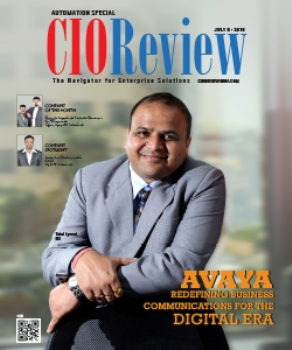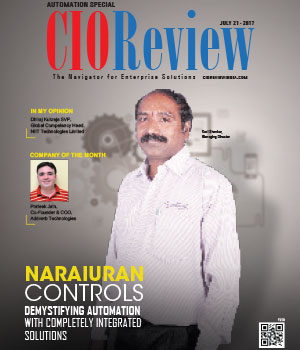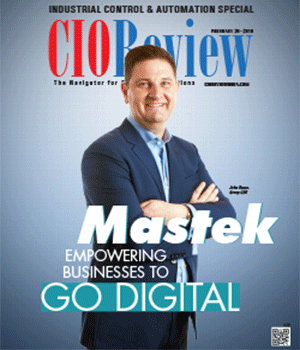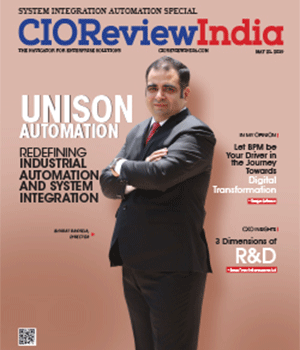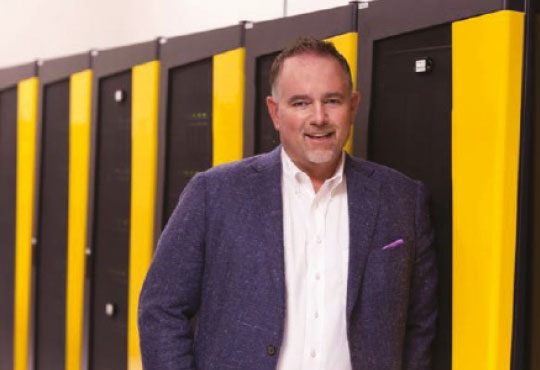
What Startups Should do to Land their First Ten Customers
Ajeya Motaganahalli, Director- Engineering Programs, NetApp India | Wednesday, 23 August 2017, 12:36 IST
 What’s more difficult than building a kick-ass product? Its landing your first 10 customers; and what’s even tougher than that? Landing that first customer. Building a product that is worthy of consumption is the BIG goal - any wide eyed startup listening? While there is no clear prescription in terms of how to achieve this, here are some pointers that may be worthwhile. And yes, I assume you have a great founding team, a great product idea and a working product to start with-now the ingredients that will help us in our quest.
What’s more difficult than building a kick-ass product? Its landing your first 10 customers; and what’s even tougher than that? Landing that first customer. Building a product that is worthy of consumption is the BIG goal - any wide eyed startup listening? While there is no clear prescription in terms of how to achieve this, here are some pointers that may be worthwhile. And yes, I assume you have a great founding team, a great product idea and a working product to start with-now the ingredients that will help us in our quest.
Living the values
First things first. Establish a set of Values, believe in it, live it. Yes, this sounds like a sermon, but it is the one thing that needs to be cast in stone before you think of anything else. It is vital that all of your customers have a consistent experience while dealing with you, your company, your executives and your sales force. Your employees must have a common set of policies that are consistent and fair. As leaders, you and the leadership team must have a mental marker that works as a guideline in decision making and trade - offs. Your dealings with your customers must espouse the most valued of all – a sense of clarity, integrity and honesty. This is the basis of your brand. Everything else in marketing, the catchy slogans or punchy logos, will start to make sense and drive interest only when the foundation is rock solid.
Develop an outsider’s perspective
As developers and creators, we can marvel at tech innovation endlessly. However, at times, our proximity to the product can blind us from understanding whether a compelling customer use case exists. It’s extremely important to have top class external focused product managers who can provide third party validation of customer use cases. The question to keep in mind should be, “Why would someone pay for this?” It will go a long way towards having the right perspective while fine tuning your product for your target market.
Keep it simple
The power of product simplicity can never be understated. As much as customers love having choices, what they would appreciate more is an easy set of standard configurations. No one wants to spend tons of time installing the product, setting it up, configuring it and optimizing it. A two-click install followed by a couple of easy clicks to configure it and get it to run is all it should take. Of course, you could always provide options to enable a power user to play around. Just think of how easy it was to install and use WhatsApp the first ever time you ever did.
Understand every user’s experience
Put yourself in your potential customer’s shoes. How quickly and easily can you provide the customer with an evaluation copy of the product to play with? How easy or cumbersome is the paperwork to get their hands on the product? Think of these aspects from the perspective of your potential customers – even those who are less than tech savvy. Focus on simplifying the process. Now, think about the product. What’s the user interface like: are the usage steps logical, fun to use and intuitive? Would you rather provide cool context sensate tool tip help or voluminous documentation? If you’re able to answer these questions accurately, your thinking is on the right path.
What is your differentiator?
There are two scenarios in which your product will be wildly successful: either your product solves an existing customer problem (like in the case of Uber) or it becomes an aspirational buy for consumers creating new possibilities (remember the first iPhone?). Whichever path you may choose to take, it is crucial to ensure that your product has a clear differentiator from its competition. A “me too” product doesn’t last very long, unless it distinguishes itself from the pack.
“As developers and creators, we can marvel at tech innovation endlessly. However, at times, our proximity to the product can blind us from understanding whether a compelling customer use case exists”
While the list above is by no means exhaustive, it covers the fundamentals required to keep you on course to get your foot in the door. Once you land your first ten customers, and if they are happy with what they have, you’ll find that getting the next ten customers and the ten after, that much easier.
What’s more difficult than building a kick-ass product? It’s landing your first 10 customers; and what’s even tougher than that? Landing that first customer. Building a product that is worthy of consumption is the BIG goal - any wide eyed startup listening? While there is no clear prescription in terms of how to achieve this, here are some pointers that may be worthwhile. And yes, I assume you have a great founding team, a great product idea and a working product to start with.
Clarity in purpose, focus on product differentiation - Either your product solves an existing customer problem or becomes an aspirational buy for the consumers where it shows the path to new possibilities (remember the first iPhone).
The list above is in no means exhaustive but in my honest opinion covers some basics of going about first customer acquisition.
CIO Viewpoint
By Steve Brunker, CIO, LSI Industries
By Joel Austin, CIO, Oncor Electric Delivery
How Is IoT Emerging as Next Technology Mega...
By Prashanta Ghoshal, Director - IT Solutions, Geometric Ltd.
CXO Insights
Addressing the Challenges in Logistics Automation
By Janifha Evangeline
Digitalization - the critical enabler for...
By Rajesh Ramachandran, Global Chief Digital Officer - Process Automation & ABB Ability, ABB
Enterprise-wide Approach Needed for...


